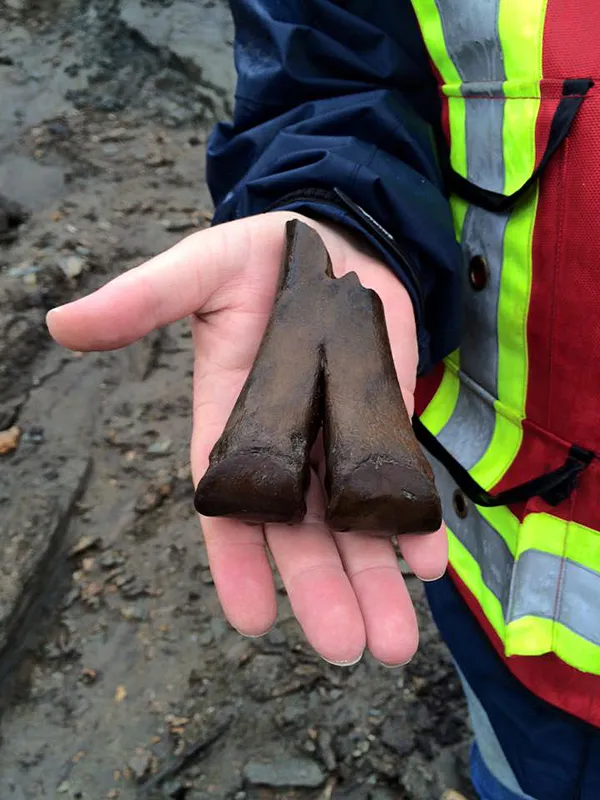It comes as a shock to many people when they learn that Northern Canada was once home to camels. Fossils from two very different types of camels have been found in Yukon. The most ancient of these, called the Yukon giant camel (Paracamenlus), was an ancestor of the living domestic camel found today in the deserts of Asia and Africa. The other was the western camel (Camelops hesternus), which existed more recently.
Yukon's Giant Camel History

Fossils of large-bodied giant camels have been found by scientists in the Old Crow area of Yukon for over a century, but their identity remained elusive until quite recently. These camels were much larger than their modern counterparts, the dromedary (one-humped) and Bactrian (two-humped) camels. They had long, massive limbs and long spines on the thoracic vertebra, creating a large hump.
Analysis of ancient proteins preserved in a camel bone discovered in 2011 on northern Ellesmere Island indicated the bone belonged to a close relative of the living domestic camels of Asia. The protein signature was also nearly identical to the Yukon giant camel bones from Old Crow. In other words, this was a 3.5 million-year-old ancestor of today's living camels. This suggests that true camels evolved in the Arctic and spread across the Bering land bridge to Asia before the Ice Age, possibly as early as 5 million years ago. These early camel ancestors ranged from the Canadian High Arctic across Beringia and into Europe. The fossils from Old Crow are members of the group that lived during the early stages of the Ice Age, around 1 million years ago.
Yukon's Other Camel
The more recent western camel was relatively common across western North America, ranging as far south as central Mexico during the last 150,000 years of the Ice Age. Western camels were restricted to North America and never made the journey across Beringia to Asia. Reconstructions based on their overall skeleton indicate the western camel probably looked like large a dromedary camel, with much longer limbs and a longer, narrower head. The shape of their jaws and teeth suggest that they were a mixed feeder, preferring a variety of leaves, shrubs, grasses and other flowering plants.
Until recently, western camels were thought to be more closely related to the "camels" of South America (the llama, alpaca, and guanaco) than to eastern camels, but a study published in 2015 demonstrated that this is not the case. The new results, based on DNA from Yukon fossils, indicate that ice age western camels split off around 10 million years ago from the branch of the family tree that includes modern-day camels. While the direct ancestors of modern camels inhabited the arctic and spread across the Bering Land Bridge to Asia around 7 million years ago, the branch that included western camels stayed in North America until the end of the Ice Age.
For most of their history, western camels stayed in the southern part of North America. Fossils from Yukon and Alaska tell scientists that western camels made their way north during a relatively warm, interglacial period of the last Ice Age. However, when they arrived in the Arctic, the Bering Land Bridge was flooded and kept them from migrating to Asia like their cousins did. They also do not seem to have arrived in the North in large numbers, or to have lived there very long.
Western camel fossils in Yukon are quite rare, but have been found along the Old Crow River, the White River, and gold mines at Hunter Creek and Sixtymile in the Klondike. A small fragment of a western camel toe bone found on the White River in southwest Yukon was recovered just beneath a volcanic ash bed that dates to 90,000 years ago. This is the most ancient western camel fossil from Beringia.
Want to find out more? Check out the Beringian Research Notes about Yukon's camels.


